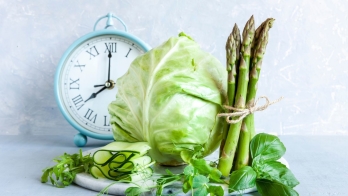The best supplements to boost recovery after a running injury
No runner wants to deal with an injury, yet most of us will encounter one at some point. While there's no replacement for rest, rehab, and patience, certain supplements can support your recovery after a running injury and help you get back to training in less time.
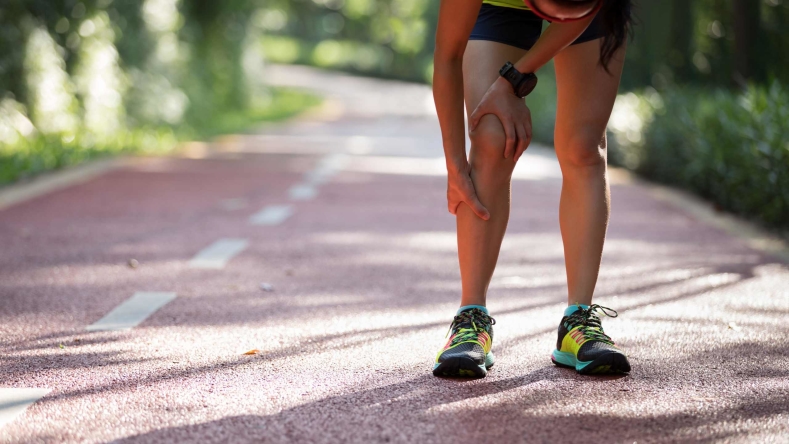
No runner wants to face a running injury, but the harsh reality is that roughly half of regular runners get hurt yearly [ 1
If you’re wondering which supplements are most effective, we've got you covered. From prioritizing protein to easing inflammation, here are the best running supplements to boost recovery after a running injury.
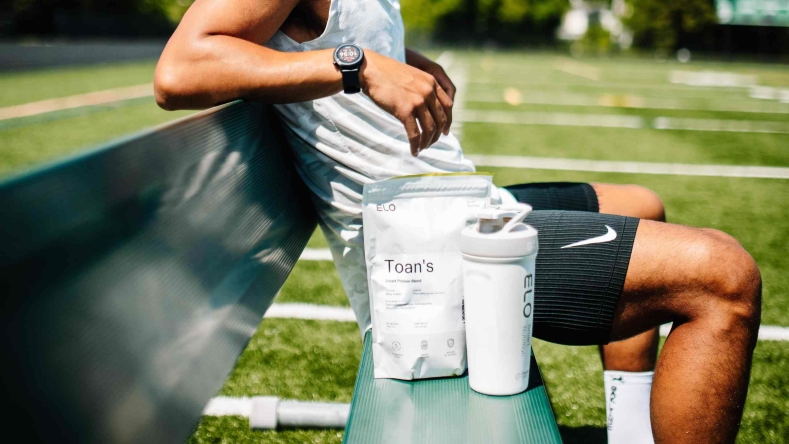
Protein
Protein is essential for endurance athletes 2
One of the most common mistakes runners make is to cut back on calories and protein during periods of injury. However, this can be detrimental, since an athlete’s energy and protein needs may increase during injury recovery (especially in the early phases) to meet the increased demands of healing, repairing tissue, and stimulating muscle protein synthesis [ 2
Moreover, studies show that consuming enough protein while injured can reduce muscle and strength loss and help with weight management [ 3
How much protein do you need if you’re injured?
If you’re recovering from a running injury, most experts recommend getting 2-2.5 grams of protein per kilogram of body weight (g/kg) daily.
It’s important to spread your intake throughout the day as research shows the body can only utilize 20-40 g of protein for muscle synthesis at any time. Dividing your intake into 4-6 protein-rich meals will ensure your body has a regular supply of amino acids to support basic bodily functions, tissue repair, and recovery [ 3 4
Best sources of protein for injured athletes
Eating protein rich in leucine (an essential amino acid) may benefit injured runners as it inhibits muscle catabolism in injured athletes, especially during the early stages of recovery when tissue breakdown and muscle loss can be significant [ 5
Experts recommend that injured athletes get 20-30 g of leucine-rich protein (~3 g pure leucine) in each meal and snack, including before bed [ 2
Protein foods rich in leucine include cottage cheese, eggs, salmon, canned navy beans, chickpeas, soybeans (tofu, tempeh, and edamame), and pumpkin seeds.
You may also want to fill in the gaps with high-quality whey or plant protein
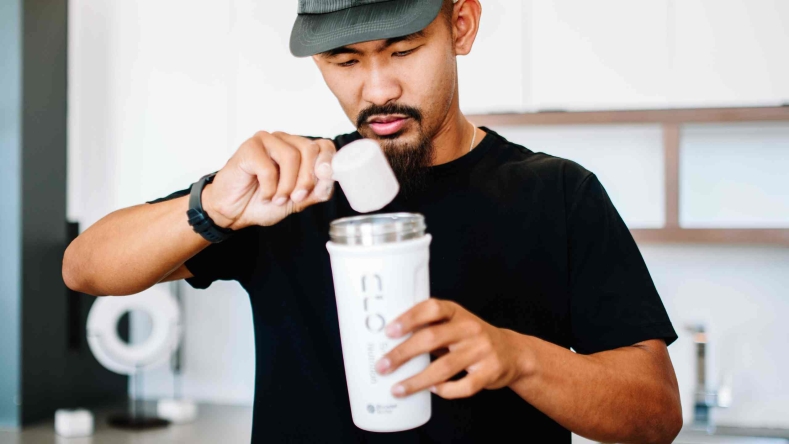
How Elo Smart Protein can boost recovery from a running injury
If you’re wondering how to meet your increased protein needs and get that all-important leucine while not overlooking other critical nutrients in your diet, Elo Health
Elo Smart Recovery
Smart Recovery membership also includes unlimited access to a registered dietitian and real-time dosing recommendations based on your latest tracked workout via the Elo App. Unlike other personalized protein products, Elo Smart Recovery evolves as your goals and needs change through continuous feedback loops.
Check out this article to learn more about Smart Protein 30% off your first month with code TRY30
Omega-3 fatty acids
Inflammation is part of the body’s natural response to injury and typically peaks in the first 48 hours after the injury. Initial swelling and inflammation help with the initial stages of injury repair; however, lingering inflammation can impede recovery by limiting the repair of damaged tissue and triggering muscle atrophy [ 6
Omega-3s
Emerging research suggests that omega-3s play a role in athletes' recovery and injury prevention, since the anti-inflammatory properties of fish oil-derived omega-3s may modulate the immune response and prevent excessive inflammation during recovery [ 5 7
Omega-3 fats also may reduce muscle loss by increasing the body’s sensitivity to amino acids and enhancing muscle synthesis [ 8 9
Omega-3 dosing
The daily recommendation for all omega-3s is 1,600 mg/day for men and 1,100 mg/day for women [ 10
If you have a running injury, it’s best to take a conservative approach to supplementation since excess omega-3s can dampen the body’s natural inflammatory response and impair injury healing. If you eat fish, consuming 1-2 portions (~8 ounces) of fish per week may be adequate; however, if you don’t regularly consume fish, supplements can also be beneficial for helping you meet your needs and enhance healing [ 10
Sources of omega-3s
Some dietary sources of omega-3s include [ 10
Cold-water fatty fish, including salmon, mackerel, tuna, herring, and sardines. Farmed fish typically have higher levels of EPA and DHA than wild-caught fish.
Fortified foods like eggs, yogurt, juices, milk, and soy beverages.
Nuts and seeds
Olive oil
Fish oil supplements 3
Glucosamine and chondroitin
Joint stiffness and pain are standard among runners and can be exacerbated by intense training cycles, mileage jumps, or simply aging. Glucosamine and chondroitin are natural compounds found in joints and cartilage. If you’re looking for supplements for runners joints, research shows glucosamine and chondroitin may help ease joint pain and slow joint degradation, especially in knees and hips [ 11 12
Glucosamine chondroitin dosage
The recommended dosage for glucosamine sulfate is 300-500 mg 3x/day (900-1,500 mg/day). Alternatively, up to 3,000 mg of glucosamine sulfate salts/day can be taken as a single dose [ 11
For chondroitin, a single or divided dose of 1,000-1,200 mg/day appears to be most helpful for joint issues [ 12
Sources of glucosamine and chondroitin
Supplementation is the only option for consuming adequate amounts of glucosamine and chondroitin for joint health. Glucosamine is typically harvested from shellfish, while chondroitin is usually produced synthetically.
If you’re a runner struggling with inflammation, joint pain, or extreme stiffness, here are some other
joint health supplements
you may want to consider.
Calcium and vitamin D
Calcium vitamin D
Calcium is the major component of bone, providing strength and structure to the skeleton. Ninety-nine percent of the calcium in our body exists in our bones and teeth, but it also plays an important role in regulating muscle contractions, nerve conduction, and blood clotting [ 4
Vitamin D is a fat-soluble vitamin that plays a key role in calcium absorption in the gut and is vital for a strong skeleton [ 13 28 14
While daily calcium needs can be met through the diet, vitamin D is harder to come by. As such, nearly everyone can benefit from supplemental vitamin D, though it may not be necessary if you live close to the equator and are out in the sun regularly.
Calcium and vitamin D dosing
The recommended dietary allowances for calcium are [ 15
Women:
1,000mg/day (age 19-50)
1,200mg/day (51+)
Men:
1,000mg/day (age 19-70)
1,200mg/day (71+)
For Vitamin D, the recommended daily allowance for both men and women 19-70 years old is 15 mcg/day (600 - 800 IU), but some evidence suggests that 50mcg or more (2,000 IU+) may be helpful for certain people [ 13
Sources of calcium and vitamin D
Before you go all-in on calcium supplements, it’s worthwhile assessing if you get (or can get) adequate calcium from dietary sources, including yogurt, milk, cheese, canned salmon (with bones), canned sardines, broccoli, kale, and fortified foods like juice, cereals, and plant-based milk [ 15
If you need a supplement, look for calcium citrate and take it in divided doses to maximize absorption. Take iron and calcium supplements at separate times since iron interferes with calcium absorption and vice versa.
Vitamin D can be synthesized in our skin from cholesterol and exposure to sunlight; however, few of us get enough sun all year round to rely solely on endogenous vitamin D. Given that Vitamin D is only found in limited quantities in a few foods such as cod liver oil, salmon, and fortified milk, supplemental vitamin D3 is the best option for many.
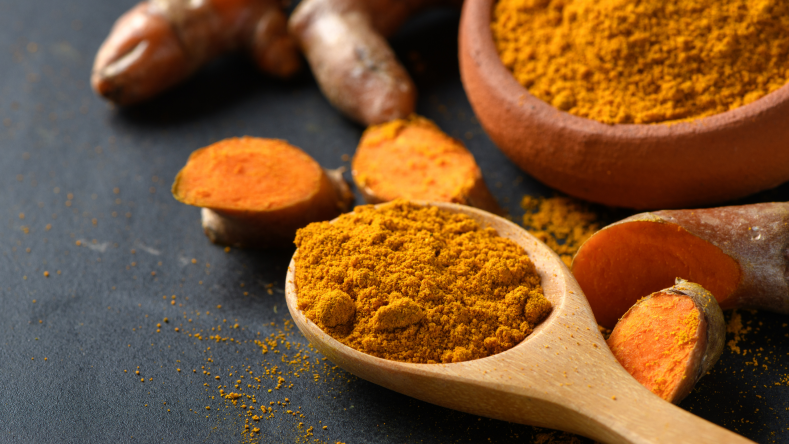
Turmeric (Curcumin)
Turmeric 16 17
Studies show that curcumin may be a helpful supplement for runners joints. Studies show it can alleviate joint pain and inflammation in people with osteoarthritis, a common issue among runners from years of pounding pavement [ 17
Early studies also suggest curcumin may benefit post-run recovery, particularly for fighting inflammation and reducing muscle soreness after exercise [ 17
Turmeric dosing
Taking 1,000 mg/day of curcumin for 8-12 weeks is the most effective for relieving osteoarthritis pain and inflammation [ 17
For reducing muscle soreness, doses of 400-2,000 mg/day in the days leading up to and following exercise appear to be the most effective [ 17
Interestingly, taking curcumin with black pepper has been shown to increase the bioavailability of curcumin by up to 2,000%, which is a major plus considering it is not well absorbed by the body on its own [ 18
Turmeric sources
Adding turmeric to dishes at home can enhance flavor and color; however, it’s unlikely to provide enough curcumin to kick joint pain and inflammation. Curcumin supplementation is generally the easiest and most effective way for runners to reap the joint and muscle benefits.
Collagen
If you’re feeling increasingly achy or suffer from sore joints after running, collagen
As you age, your body naturally loses collagen, which increases your risk of degenerative joint disorders such as osteoarthritis, as well as general joint pain and stiffness [ 19
While running appears to be protective against osteoarthritis, research shows that athletes who took 10 g/day of collagen hydrolysate for 24 weeks experienced significant improvements in joint stiffness and self-reported joint pain [ 20 21
As an added benefit, collagen supplementation has also been linked to improvements in muscle mass, body composition, and bone health, which may provide added benefits as you recover from a running injury [ 22 23 24 25
Collagen dosage
Doses of 10 g/day of hydrolyzed collagen may be beneficial for reducing joint pain associated with osteoarthritis and exercise-related joint pain. In comparison, 15 g/day may benefit muscle mass and body composition when paired with strength or resistance training [ 20 21 22
Sources of collagen
Collagen is naturally found in the connective tissues of animals, including chicken, pork, beef, and fish [ 26
You can also take collagen supplements, which have become popular for their convenience and potency [ 27 collagen guide
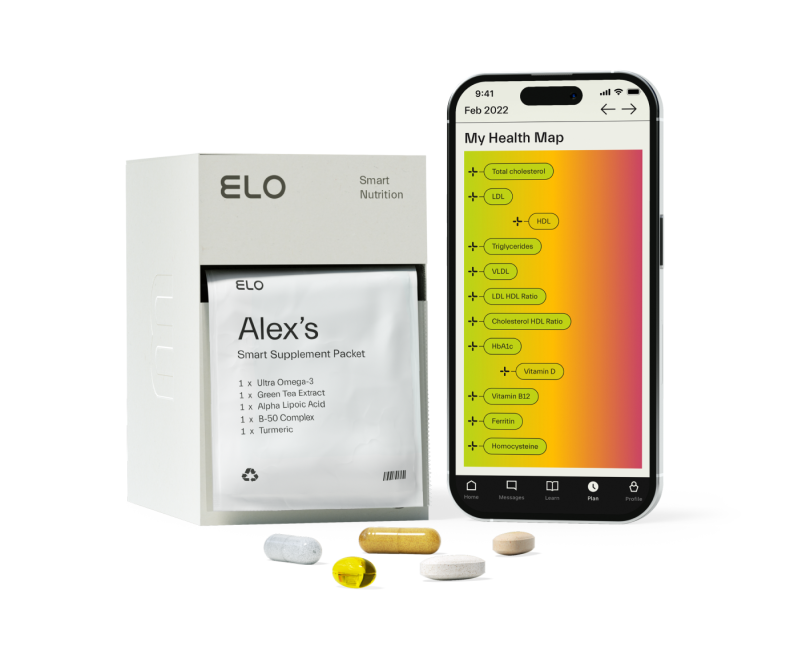
Personalized supplements with Elo Health
At Elo Health 1:1 dietitian support
Elo also provides personalized smart supplements made just for you through at-home blood testing, biomarkers, and data from wearables. After all, your nutrition needs are unique, and your supplement plan should be, too.
Start your personalized supplement journey today
Summary
If you’re a runner, chances are you’ll experience a running injury at some point in time. In addition to getting adequate calories, rest, and rehabilitation, consuming leucine-rich protein and taking certain supplements like fish oil, glucosamine, chondroitin, turmeric, collagen, calcium, and vitamin D can benefit runners recovering from an injury.
If you’re considering supplementation to boost recovery from a running injury, Elo Health offers personalized supplements to address your specific health concerns, as well as 1:1 dietitian support.
And when you're ready to start running again, check out our Ultimate guide to nutrition for running performance
Disclaimer: The text, images, videos, and other media on this page are provided for informational purposes only and are not intended to treat, diagnose, or replace personalized medical care.
Key takeaways
Prioritizing protein can help repair tissues and minimize muscle loss while recovering from an injury. Leucine-rich protein sources like eggs, salmon, and tofu can be particularly beneficial.
Omega-3 fatty acids from fish oil and turmeric may help reduce inflammation and aid in healing during the recovery process.
Glucosamine, chondroitin, and collagen supplements may be beneficial for runners experiencing joint pain and stiffness, especially in the knees and hips.
Elo Health’s
Smart Recovery
andSmart Supplement
products can help enhance recovery from a running injury.
References
van Mechelen W. (1992). Running injuries. A review of the epidemiological literature. Sports medicine (Auckland, N.Z.), 14(5), 320–335.
https://doi.org/10.2165/00007256-199214050-00004
Giraldo-Vallejo, J. E., Cardona-Guzmán, M. Á., Rodríguez-Alcivar, E. J., Kočí, J., Petro, J. L., Kreider, R. B., Cannataro, R., & Bonilla, D. A. (2023). Nutritional Strategies in the Rehabilitation of Musculoskeletal Injuries in Athletes: A Systematic Integrative Review. Nutrients, 15(4), 819.
https://doi.org/10.3390/nu15040819
Tipton K. D. (2015). Nutritional Support for Exercise-Induced Injuries. Sports medicine (Auckland, N.Z.), 45 Suppl 1, S93–S104.
https://doi.org/10.1007/s40279-015-0398-4
Thomas, D. T., Erdman, K. A., & Burke, L. M. (2016). Position of the Academy of Nutrition and Dietetics, Dietitians of Canada, and the American College of Sports Medicine: Nutrition and Athletic Performance. Journal of the Academy of Nutrition and Dietetics, 116(3), 501–528.
https://doi.org/10.1016/j.jand.2015.12.006
Papadopoulou S. K. (2020). Rehabilitation Nutrition for Injury Recovery of Athletes: The Role of Macronutrient Intake. Nutrients, 12(8), 2449.
https://doi.org/10.3390/nu12082449
Howard, E. E., Pasiakos, S. M., Blesso, C. N., Fussell, M. A., & Rodriguez, N. R. (2020). Divergent Roles of Inflammation in Skeletal Muscle Recovery From Injury. Frontiers in physiology, 11, 87.
https://doi.org/10.3389/fphys.2020.00087
Joyce, D., & Lewindon, D. (2015). Sports Injury Prevention and Rehabilitation: Integrating Medicine and Science for Performance Solutions. Routledge.
https://www.routledge.com/Sports-Injury-Prevention-and-Rehabilitation-Integrating-Medicine-and-Science/Joyce-Lewindon/p/book/9780415815062
Philpott, J. D., Witard, O. C., & Galloway, S. (2019). Applications of omega-3 polyunsaturated fatty acid supplementation for sport performance. Research in sports medicine (Print), 27(2), 219–237.
https://doi.org/10.1080/15438627.2018.1550401
Marshall, R. N., Smeuninx, B., Morgan, P. T., & Breen, L. (2020). Nutritional Strategies to Offset Disuse-Induced Skeletal Muscle Atrophy and Anabolic Resistance in Older Adults: From Whole-Foods to Isolated Ingredients. Nutrients, 12(5), 1533.
https://doi.org/10.3390/nu12051533
Office of Dietary Supplements - Omega-3 fatty acids. (n.d.).
https://ods.od.nih.gov/factsheets/Omega3FattyAcids-HealthProfessional/
Patel, K. (2020, Dec 3). Glucosamine. Examine.Com.
https://examine.com/supplements/glucosamine/
Patel, K. (2018, Jun 14). Chondroitin. Examine.Com.
https://examine.com/supplements/chondroitin/
Office of Dietary Supplements - Vitamin D. (2020, October 9). National Institutes of Health.
https://ods.od.nih.gov/factsheets/VitaminD-HealthProfessional/
Kerksick, C.M., Wilborn, C.D., Roberts, M.D. et al. ISSN exercise & sports nutrition review update: research & recommendations. J Int Soc Sports Nutr 15, 38 (2018).
https://doi.org/10.1186/s12970-018-0242-y
Office of Dietary Supplements - Calcium. (2020, March 26). National Institutes of Health.
https://ods.od.nih.gov/factsheets/Calcium-HealthProfessional/
Patel, K. (2021, Mar 15). Curcumin. Examine.Com.
https://examine.com/supplements/curcumin/
Hewlings, S. J., & Kalman, D. S. (2017). Curcumin: A Review of Its Effects on Human Health. Foods (Basel, Switzerland), 6(10), 92.
https://doi.org/10.3390/foods6100092
Yoon, W. Y., Lee, K., & Kim, J. (2020). Curcumin supplementation and delayed onset muscle soreness (DOMS): effects, mechanisms, and practical considerations. Physical activity and nutrition, 24(3), 39–43.
https://doi.org/10.20463/pan.2020.0020
Li, Y. S., Xiao, W. F., & Luo, W. (2017). Cellular aging towards osteoarthritis. Mechanisms of ageing and development, 162, 80–84.
https://doi.org/10.1016/j.mad.2016.12.012
García-Coronado, J. M., Martínez-Olvera, L., Elizondo-Omaña, R. E., Acosta-Olivo, C. A., Vilchez-Cavazos, F., Simental-Mendía, L. E., & Simental-Mendía, M. (2019). Effect of collagen supplementation on osteoarthritis symptoms: a meta-analysis of randomized placebo-controlled trials. International orthopaedics, 43(3), 531–538.
https://doi.org/10.1007/s00264-018-4211-5
Clark, K. L., Sebastianelli, W., Flechsenhar, K. R., Aukermann, D. F., Meza, F., Millard, R. L., Deitch, J. R., Sherbondy, P. S., & Albert, A. (2008). 24-Week study on the use of collagen hydrolysate as a dietary supplement in athletes with activity-related joint pain. Current medical research and opinion, 24(5), 1485–1496.
https://doi.org/10.1185/030079908x291967
Zdzieblik, D., Oesser, S., Baumstark, M. W., Gollhofer, A., & König, D. (2015). Collagen peptide supplementation in combination with resistance training improves body composition and increases muscle strength in elderly sarcopenic men: a randomised controlled trial. The British journal of nutrition, 114(8), 1237–1245.
https://doi.org/10.1017/S0007114515002810
Oertzen-Hagemann, V., Kirmse, M., Eggers, B., Pfeiffer, K., Marcus, K., de Marées, M., & Platen, P. (2019). Effects of 12 Weeks of Hypertrophy Resistance Exercise Training Combined with Collagen Peptide Supplementation on the Skeletal Muscle Proteome in Recreationally Active Men. Nutrients, 11(5), 1072.
https://doi.org/10.3390/nu11051072
Porfírio, E., & Fanaro, G. B. (2016). Collagen supplementation as a complementary therapy for the prevention and treatment of osteoporosis and osteoarthritis: a systematic review. Revista Brasileira de Geriatria e Gerontologia, 19(1), 153–164.
https://doi.org/10.1590/1809-9823.2016.14145
Argyrou, C., Karlafti, E., Lampropoulou-Adamidou, K., Tournis, S., Makris, K., Trovas, G., Dontas, I., & Triantafyllopoulos, I. K. (2020). Effect of calcium and vitamin D supplementation with and without collagen peptides on bone turnover in postmenopausal women with osteopenia. Journal of musculoskeletal & neuronal interactions, 20(1), 12–17.
https://www.ncbi.nlm.nih.gov/pmc/articles/PMC7104583/
Liu, D., Nikoo, M., Boran, G., Zhou, P., & Regenstein, J. M. (2015). Collagen and gelatin. Annual review of food science and technology, 6, 527–557.
https://doi.org/10.1146/annurev-food-031414-111800
León-López, A., Morales-Peñaloza, A., Martínez-Juárez, V. M., Vargas-Torres, A., Zeugolis, D. I., & Aguirre-Álvarez, G. (2019). Hydrolyzed Collagen-Sources and Applications. Molecules (Basel, Switzerland), 24(22), 4031.
https://doi.org/10.3390/molecules24224031
Khazai, N., Judd, S. E., & Tangpricha, V. (2008). Calcium and vitamin D: skeletal and extraskeletal health. Current rheumatology reports, 10(2), 110–117. https://doi.org/10.1007/s11926-008-0020-y






